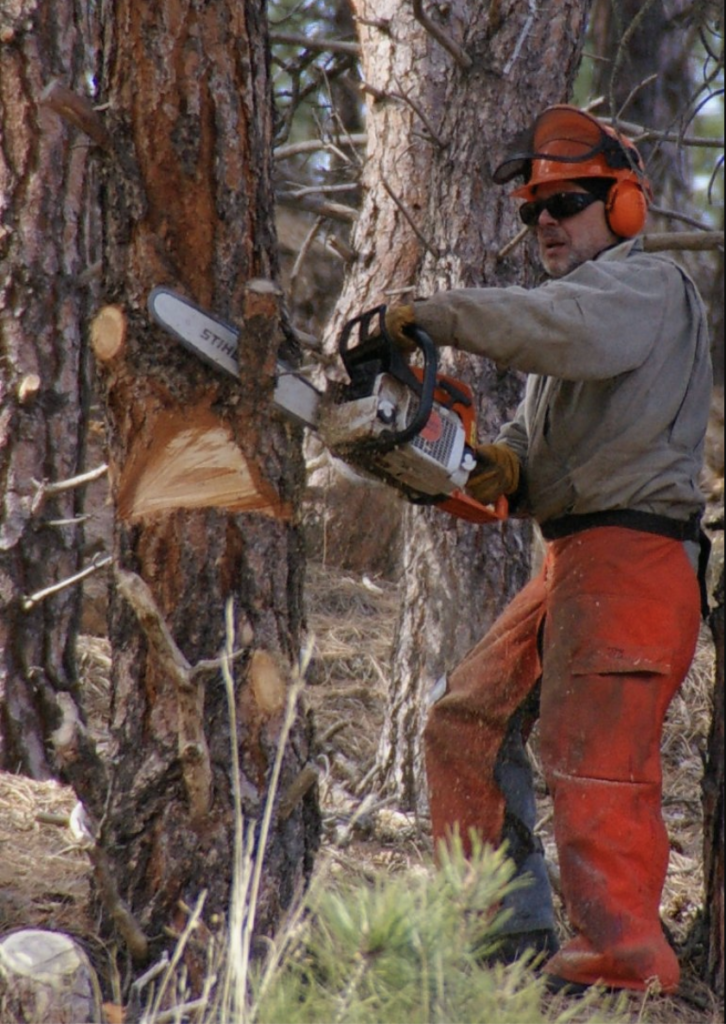Having a tree removed from your property can be more expensive than you realize if you don’t properly quote your bid before the man with the chain saw comes over. In addition to the cost of cutting the tree down, you’ll need to know the extra upcharges for removing it completely.

If you don’t know your local municipal or homeowner’s association rules and regulations, you might find yourself out on a limb with what you thought was a simple project.
Get several bids before you have a tree cut down.
Tree Cutting Basics
The main cost of a removing a tree will be the expense of cutting it down or up, depending on if it’s standing or falling. If you want to get basic prices over the phone, measure your tree around the circumference to get the diameter. Some cutting services take this into consideration as part of their bid process.
If you don’t know the exact height of the tree, take a picture on your smart phone and send it to the tree removal company, with a recognizable object such as a lawn chair or rake next to the tree for scale.
Depending on the size of the tree and the situation, your cost might be anywhere from $200 to $2,000 or more, depending on your area. Live trees are more expensive to cut than fallen trees, unless the tree has fallen in an awkward or dangerous place.
Fallen vs. Standing Tree
If you’re having a fallen tree removed, the cost will be different than taking down a standing tree. If the tree is lying horizontally on the ground and requires no climbing to cut it apart, the job will be less than if the company has to climb a live tree, cut off branches and use bungee chords to take it down piece by piece.
If the tree has fallen on a house or otherwise requires any awkward footing, including near a power line, the job might cost more. A photo will help an estimator if you’re working online or over the phone. Plan on having an estimator drop by if it’s not an emergency situation.
Hauling Tree Debris Away
In addition to cutting a tree, you’ll need to pay for having it hauled away. Don’t assume the cost will be included in your cutting bid. Your hauling fee will be based on the size of your tree, but is often a small upcharge of $50 to $100.
If you want to use the tree for landscaping, you can have it turned into small chips you can blow or scatter around areas of your yard, similar to pine straw. Ask the tree removal company if they offer chipping and spreading.
Tree Stump Grinding
Removing a stump can be a serious project if you try to do it yourself. A tree company can cut the tree as close to the ground as possible, but you’ll still have some remaining. A stump grinder can eliminate a stump below the level the ground in a matter of seconds, saving you hours, or days, of backbreaking work.
Smaller tree companies might not have a stump grinder, but can refer you to one. Get the price from bidding companies before you choose one. Depending on the size of the stump and whether you’re using separate companies, stump grinding can run approximately $75 to $250.
Seeding or Sodding Afterward
After the tree is gone, you’ll have a hole in your yard. You can head to your local lawn and garden store and buy seed or a piece of sod to cover the area. Because of the acid in the remaining tree stump under the ground, it might take more than one season to get seed to grow strong and look like the rest of your lawn. Take a picture of your lawn to the store to show the expert what type of grass you have and find out what you need.
Tree-Removal Liabilities
Contact your homeowner’s association and city government to learn if there are any restrictions about cutting down trees. Just because the tree’s on your property, don’t assume you can remove it — you might end up getting fined.
Check with your insurance company before you remove a tree to make sure your homeowner’s insurance covers any damage. If the tree has fallen, the insurance company might need to come out before you remove it if it’s not an emergency situation. If the tree fell from your neighbor’s yard into yours, he might need to bear part of the cost of the removal.
Make sure any tree removal company you use is licensed and carries insurance, asking for visual proof and check the website of any professional association of which they claim to be a member.
Other Things to Consider
You can often save money on tree removal if you use a company that’s in the area already and doesn’t need to make a special trip. Some tree companies send flyers around the neighborhood when they’ll be in the area.
If the tree is near power lines, contact your power company, which might trim or remove the tree for free. Ask about tree-trimming services while the contractor is over to take advantage of removing bothersome branches on other trees, especially those close to your house.